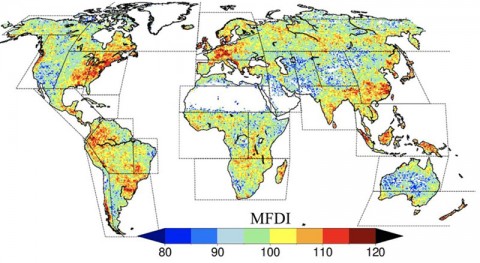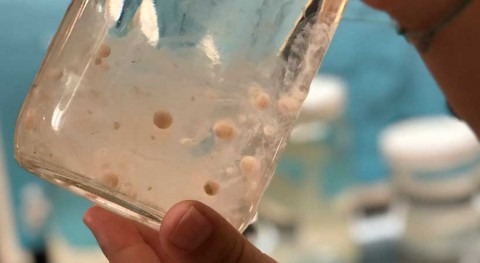Researchers funded by the U.S. National Science Foundation have created a molecular nanocage that captures the bulk of per- and polyfluoroalkyl substances, or PFAS, found in water — and it works better than traditional filtering techniques that use activated carbon. Made of organic nanoporous material designed to capture only PFAS, this tiny chemical-based filtration system removed 80 to 90% of PFAS from sewage and groundwater during the study, respectively, while showing very low adverse environmental effects.
The study was led by scientists at the University at Buffalo and published in American Chemical Society ES&T Engineering.
The organic molecular nanocages also outperformed the PFAS-filtering abilities of activated carbon, particularly in unprocessed sewage
PFAS are chemical compounds sometimes called "forever chemicals" and are commonly used in food packaging, nonstick coatings and other applications. PFAS do not degrade easily and are notoriously difficult to remove from water sources. Studies show exposure to PFAS may cause a range of negative health impacts, including decreased fertility, developmental delays in children and increased risk for some cancers. The safe and effective removal of PFAS from groundwater, sewage and other water sources is a national challenge.
Molecular nanocages have been previously suggested as candidates for pollutant removal, including for PFAS. Their sturdy structures provide capabilities to capture, remove and chemically deactivate hazardous substances like PFAS and many others. They could also potentially filter out noxious gases from the air, the study authors say.
The researchers synthesized the nanocages from a group of organic chemicals called porphyrins. Previous studies have shown success with porphyrin nanocages in removing dyes, antibiotics, insecticides and chemicals that disrupt human hormone production from water.
The researchers then tested their nanocages' ability to absorb 38 different types of PFAS, including GenX, a type of PFAS commonly used in nonstick cookware and other materials. The results showed the nanocages removed 90% of PFAS from groundwater and 80% from unprocessed or "influent" sewage.
The organic molecular nanocages also outperformed the PFAS-filtering abilities of activated carbon, particularly in unprocessed sewage. Activated carbon and other purification or filtration methods, such as ion exchange resins and reverse osmosis, tend to interact weakly with PFAS, the researchers note. They are also costly, high-maintenance and energy-intensive in comparison to nanocages.
"Porphyrin-based nanocages offer a potentially practical solution to the challenges of PFAS removal," says Samy El-Shall, a program director in the NSF Division of Chemistry. "The material can also be mass-produced at scale, and the cages are modifiable to remove PFAS only while leaving other water contents alone."









